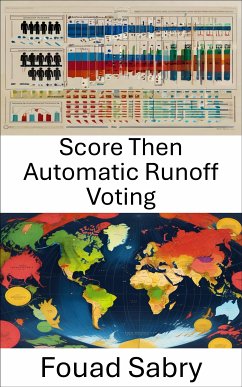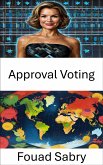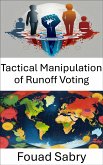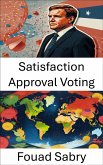You'll uncover the unique aspects of this system and its potential influence on election outcomes, voter satisfaction, and democracy. Here's a brief look inside:
1: STAR Voting-How STAR voting merges score voting with automatic runoff for more accurate election results.
2: Approval Voting-Understanding approval voting and its role in candidate evaluation based on voter acceptance.
3: Score Voting-Exploring score voting fundamentals and its advantage in capturing voter preferences.
4: Condorcet Method-Identifying the most preferred candidate through pairwise comparisons using the Condorcet method.
5: Copeland's Method-Learn how Copeland's method uses pairwise victories to determine the best candidate.
6: Monotonicity Criterion-Why increasing support for a candidate shouldn't harm their chances (monotonicity criterion).
7: Bucklin Voting-Multi-round Bucklin voting to find a majority winner.
8: Ranked Pairs-Facilitating ranking based on majority preferences using ranked pairs.
9: Condorcet Winner Criterion-The importance of selecting a candidate who wins in every head-to-head match.
10: Participation Criterion-Encouraging voter turnout through the participation criterion.
11: Majority Criterion-Ensuring broad support for the winning candidate via the majority criterion.
12: Mutual Majority Criterion-Favoring candidates with cross-sectional support under the mutual majority criterion.
13: Nanson's Method-Eliminating less popular candidates to find a consensus choice using Nanson's method.
14: Condorcet Loser Criterion-Ensuring a universally losing candidate isn't elected.
15: Reversal Symmetry-Exploring fairness in electoral systems through reversal symmetry.
16: Kemeny-Young Method-Aggregating preferences for candidate ranking via the Kemeny-Young method.
17: Later-No-Harm Criterion-Ensuring lower rankings don't harm candidates' chances (later-no-harm criterion).
18: Instant-Runoff Voting-Eliminating least popular candidates in rounds until a majority winner emerges.
19: Majority Judgment-Evaluating candidates through graded assessments using majority judgment.
20: Ranked Voting-How ranked voting systems impact voter choice and representation.
21: Comparison of Electoral Systems-Comparing strengths and weaknesses of various systems in different contexts.
Score Then Automatic Runoff Voting offers a deep dive into the future of electoral innovation. By engaging with this guide, you'll enhance your understanding of voting methods and their democratic implications. Stay ahead in the evolving world of elections.
Dieser Download kann aus rechtlichen Gründen nur mit Rechnungsadresse in A, B, BG, CY, CZ, D, DK, EW, E, FIN, F, GR, H, IRL, I, LT, L, LR, M, NL, PL, P, R, S, SLO, SK ausgeliefert werden.









